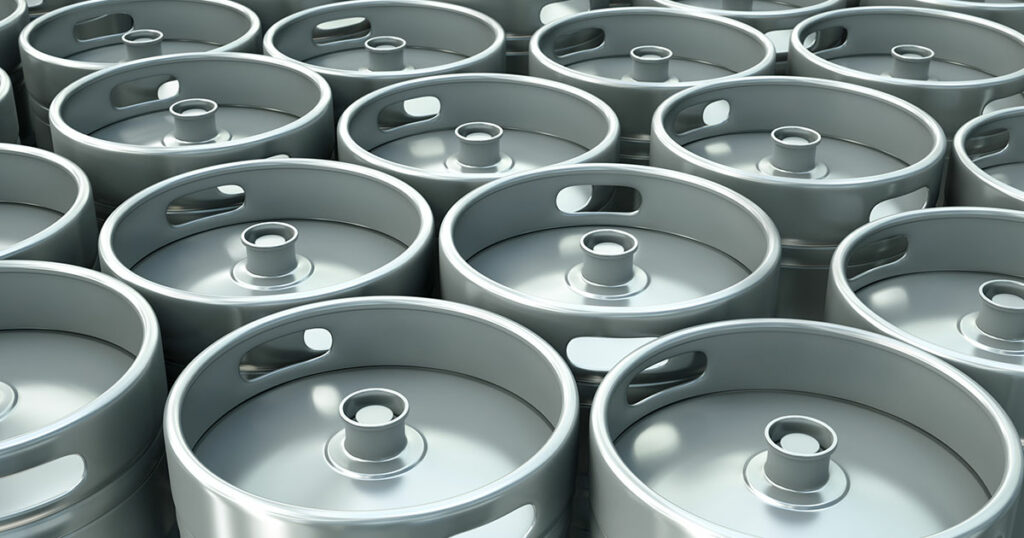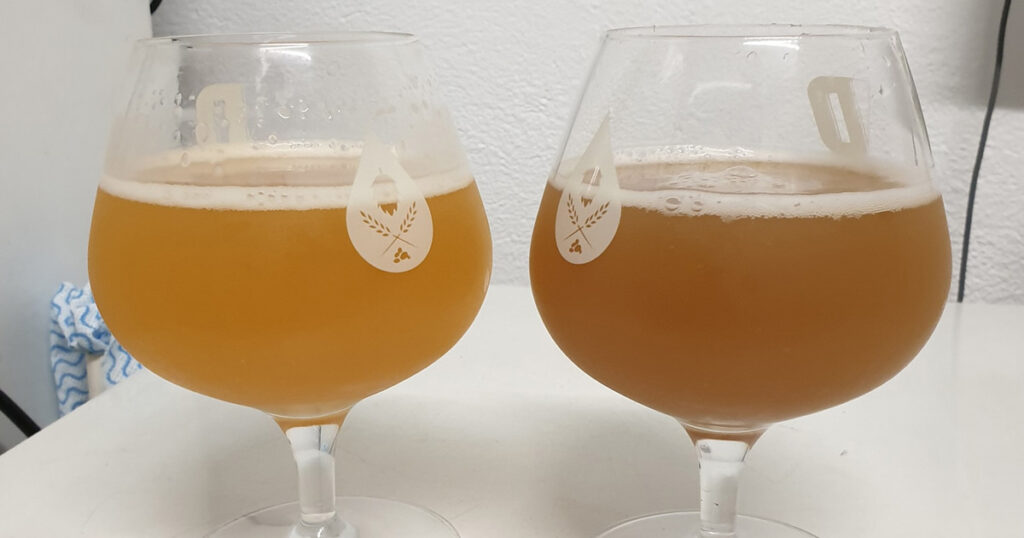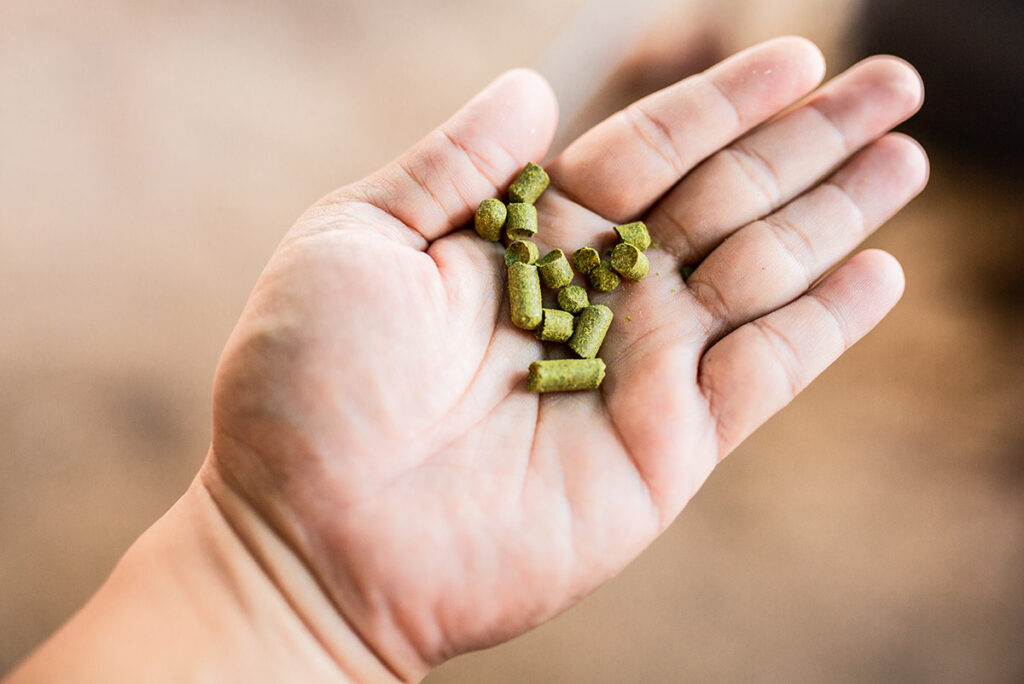Have you ever wondered how long your homebrewed beer will stay fresh in a keg? As a homebrewer, it’s essential to understand keg freshness to ensure you’re always serving your beer at its best quality and flavour. Factors such as storage temperature, dispensing method, beer type, and pasteurisation can all impact a keg’s freshness.
Home brew beer lasts approximately 4-6 months when stored in optimal conditions, while pasteurised beer will last 6-9 months.
In this article, we’ll explore these factors and offer practical tips to help your keg stay fresh for longer.
Does a Keg of Beer Go Bad?
Yes, kegged beer can go bad over time due to factors like oxidation, flavour changes, and ultraviolet light exposure.
Oxidation
Introducing oxygen into the keg can react with the beer’s compounds, altering its taste and aroma. To minimise oxidation, make sure your keg is purged of oxygen, properly sealed and stored at the right temperature.
Flavour changes
Over time, chemical reactions between beer ingredients can cause hop degradation and ester formation, leading to changes in flavour. The rate of these changes depends on the beer type and storage conditions.
Ultraviolet light exposure
Exposure to ultraviolet light can break down hop compounds and create skunky flavours. Store your kegs away from direct sunlight to prevent this from happening.
How Long Does Beer Last in a Keg Untapped?

The shelf life of beer in a keg depends on whether it’s a homebrew or commercial beer, as well as its pasteurisation status.
Homebrew vs Commercial Beer
Homebrewed beer typically has a shorter shelf life than commercial beer due to less stringent quality control processes. However, proper storage and handling can help extend your homebrew’s life.
Pasteurisation
Pasteurised beer has a longer shelf life because the process kills bacteria and microorganisms that can cause spoilage. Here are some general guidelines for beer shelf life in a keg, depending on its pasteurisation status:
- Pasteurised beer: 6 – 9 months on average
- Unpasteurised beer: 3 – 6 months on average
Beer Type and Style
The shelf life of beer in a keg can also vary depending on its type and style.
For example, lagers typically last longer than ales, and darker beers may have a longer shelf life than lighter ones. It’s essential to research and understand the specific requirements of the beer style you’re brewing to ensure optimal freshness.
Tips for Maintaining Draft Beer Keg Freshness
Here are some practical tips to help you maintain the freshness of your homebrewed beer in a keg:
- Store your kegs at the proper temperature: Generally, a temperature of 1 – 4 degrees celsius is ideal for keg storage.
- Keep your kegs away from direct sunlight or other sources of ultraviolet light.
- Regularly clean and sanitise your kegging equipment to prevent contamination.
- Rotate your kegs based on their brew date to ensure you’re always serving the freshest beer first.
How Long Does A Keg of Homebrew Last Once Tapped?
How long your homebrew keg of beer lasts depends on a few factors. Assuming the the keg was purged of oxygen and was filled using an oxygen free transfer, you can assume the following.
- Cold storage (3°C or 38°F): up to 6 months
- Warm storage (10°C or 50°F): 1-2 months
How Do You Know When a Keg of Beer Has Gone Bad?
Using Your Senses to Detect Spoilage

To determine whether your keg of beer has gone bad, you can rely on your senses of smell, sight, and taste. Here’s what to look for:
- Smell: Bad beer may have a sour, musty, or rotten odour that indicates bacterial infection or oxidation.
- Sight: Contamination or infection may cause a cloudy appearance in bad beer. It may also have sediment or chunks floating in it, indicating yeast autolysis or protein coagulation. Oxidation can lead to a brown colour. Additionally, a loss of foam or head retention can signal a loss of carbonation.
- Taste: Oxidation, infection, or light exposure can cause bad beer to have a metallic, cardboard-like, vinegar-like, or skunky flavour. An overly sweet or sour taste may indicate incomplete fermentation or bacterial growth. A flat or watery mouthfeel can also indicate a loss of carbonation.
In summary, the longevity of your tapped keg will depend on the dispensing method, storage temperature, and pressure.
To determine if your keg of beer has gone bad, trust your senses of smell, sight, and taste. Keep these guidelines and tips in mind to ensure you enjoy fresh, delicious homebrewed beer.
How to Keep Beer Fresh in Keg Storage
Proper Storage and Dispensing Procedures
To extend the shelf life of your keg and prevent spoilage, it’s crucial to follow proper storage and dispensing procedures. Here are some tips and tricks for keeping your keg fresh and tasty:
Keep Oxygen Out Of Your Beer
Once wort has fermented into beer, it’s vital to keep it as oxygen free as possible. Purging kegs before filling and using an oxygen free co2 transfer process are important if you want to keep the beer fresh for a long as possible.
Keep the Keg Cold
Storing the keg in a refrigerator or a kegerator at the ideal temperature for the beer type and style is essential. Avoid temperature fluctuations that can affect the beer’s flavour and carbonation. Remember, a stable temperature helps maintain the quality of your brew.
Maintain Pressure
Using CO₂ to pressurise and dispense the keg is key. Adjust the pressure according to the beer type and style, and check for leaks regularly, replacing seals if needed. Proper pressure management ensures that your beer remains fresh and carbonated.
Minimise Motion
Avoid shaking or moving the keg unnecessarily. Let the keg settle before tapping or serving, and reduce agitation that can cause foaming or oxidation. A steady keg ensures a smooth pour and flavourful experience.
Use Hops

Hops help preserve the beer by inhibiting spoilage and bacteria. Dry-hopped beers generally last longer than beers that don’t utilize larger hop amounts.
The Importance of Storage Temperature
Storing your keg at the ideal temperature can prevent spoilage, flavour changes, and carbonation loss. As a general rule, store your kegs between 1 and 4 degrees celsius to maximise their lifespan.
Understanding Beer Spoilage
Beer spoilage is a complex process involving various factors and causes, affecting the appearance, aroma, flavour, mouthfeel, and safety of your beer. Here are some common causes of beer spoilage and how they can be prevented or minimised:
Oxidation
Caused by exposure to oxygen, which reacts with the beer’s compounds and alters its taste and aroma. Prevent oxidation by using CO₂ to fill kegs and dispense beer.
Infection
Contamination from bacteria, wild yeast, or mould can produce off-flavours and aromas. Prevent infection by sanitising all equipment and surfaces that come in contact with the beer.
Light Exposure
Exposure to ultraviolet light breaks down hop compounds and creates skunky flavours. Prevent light exposure by storing the keg in a dark place or using a light-proof cover.
Temperature Fluctuations
Storing the keg at temperatures that are too hot or too cold can affect the chemical reactions in the beer and cause flavour changes or freezing. Prevent temperature fluctuations by storing the keg at a consistent temperature that matches the beer type and style.
Carbonation Loss
Losing pressure in the keg reduces the amount of dissolved CO₂ in the beer and affects its foam and mouthfeel. Maintain proper pressure in the keg and use CO₂ to dispense beer to prevent carbonation loss.
In conclusion, proper storage, temperature management, and understanding beer spoilage are essential for maintaining the freshness and quality of your kegged beer. Keep these tips in mind, and you’ll be well on your way to enjoying tasty homebrewed beer for longer periods. Cheers!

